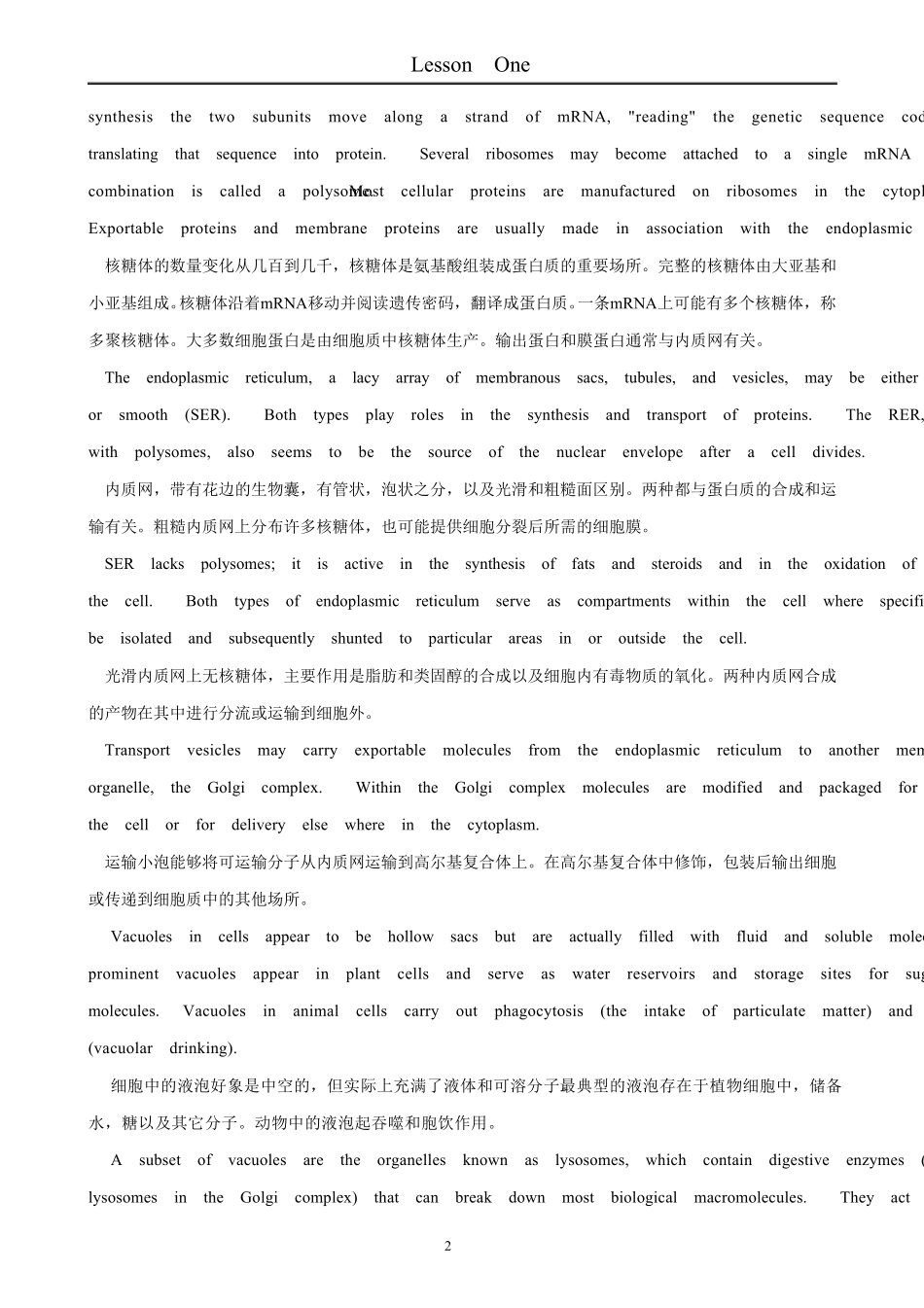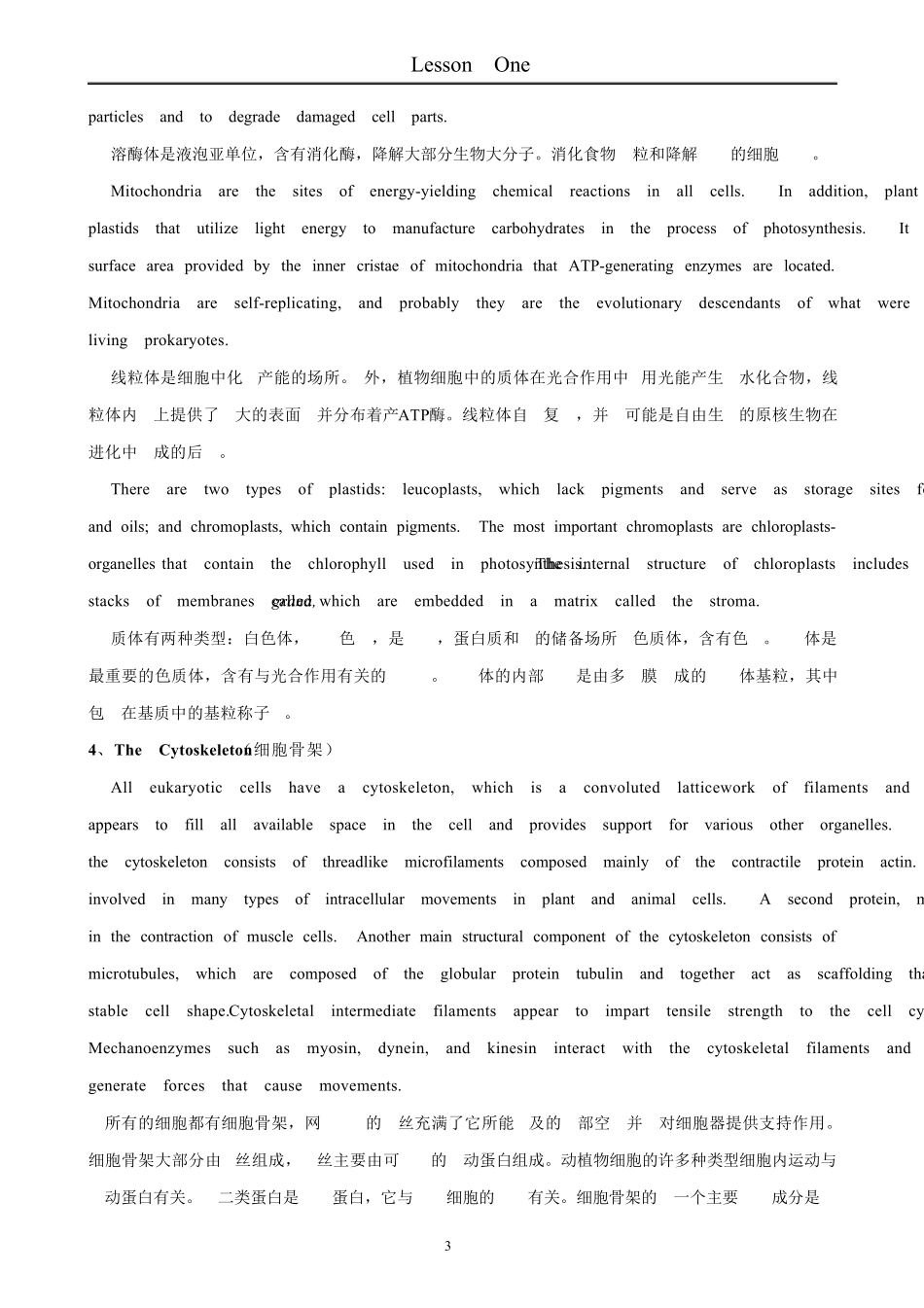Lesson OneLesson OneInside the Living Cell: Structure andFunction of Internal Cell Parts1、 Cytoplasm: The Dynamic, Mobile Factory ( 细胞质:动力工厂 )Most of the properties we associate with life are properties of the cytoplasm. Much of the mass of a cellconsists of this semifluid substance, which is bounded on the outside by the plasma membrane. Organelles aresuspended within it, supported by the filamentous network of the cytoskeleton. Dissolved in the cytoplasmic fluidare nutrients, ions, soluble proteins, and other materials needed for cell functioning.生命的大部分特征表现在细胞质的特征上。细胞质大部分由半流体物质组成,并由细胞膜(原生质膜)包被。细胞器悬浮在其中,并由丝状的细胞骨架支撑。细胞质中溶解了大量的营养物质,离子,可溶蛋白以及维持细胞生理需求的其它物质。2、The Nucleus: Information Central(细胞核:信息中心)The eukaryotic cell nucleus is the largest organelle and houses the genetic material (DNA) on chromosomes.(In prokaryotes the hereditary material is found in the nucleoid.) The nucleus also contains one or two organelles-the nucleoli-that play a role in cell division. A pore-perforated sac called the nuclear envelope separates thenucleus and its contents from the cytoplasm. Small molecules can pass through the nuclear envelope, but largermolecules such as mRNA and ribosomes must enter and exit via the pores.真核细胞的细胞核是最大的细胞器,细胞核对染色体组有保护作用(原核细胞的遗传物质存在于拟核中)。细胞核含有一或二个核仁,核仁促进细胞分裂。核膜贯穿许多小孔,小分子可以自由通过核膜,而象mRNA和核糖体等大分子必须通过核孔运输。3、Organelles: Specialized Work Units(细胞器:特殊的功能单位)All eukaryotic cells contain most of the various kinds of organelles, and each organelle performs a specializedfunction in the cell. Organelles described in this section include ri...


